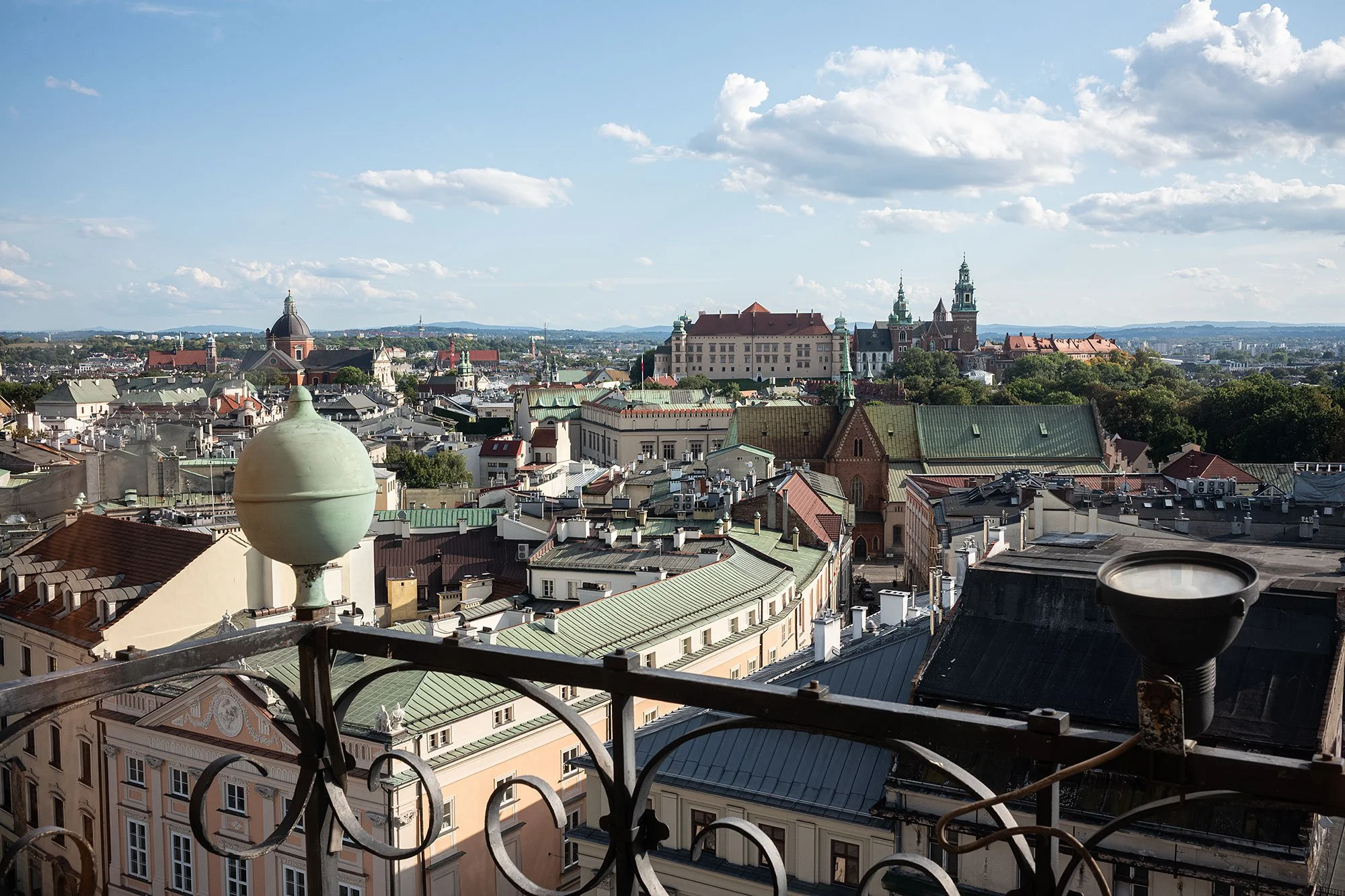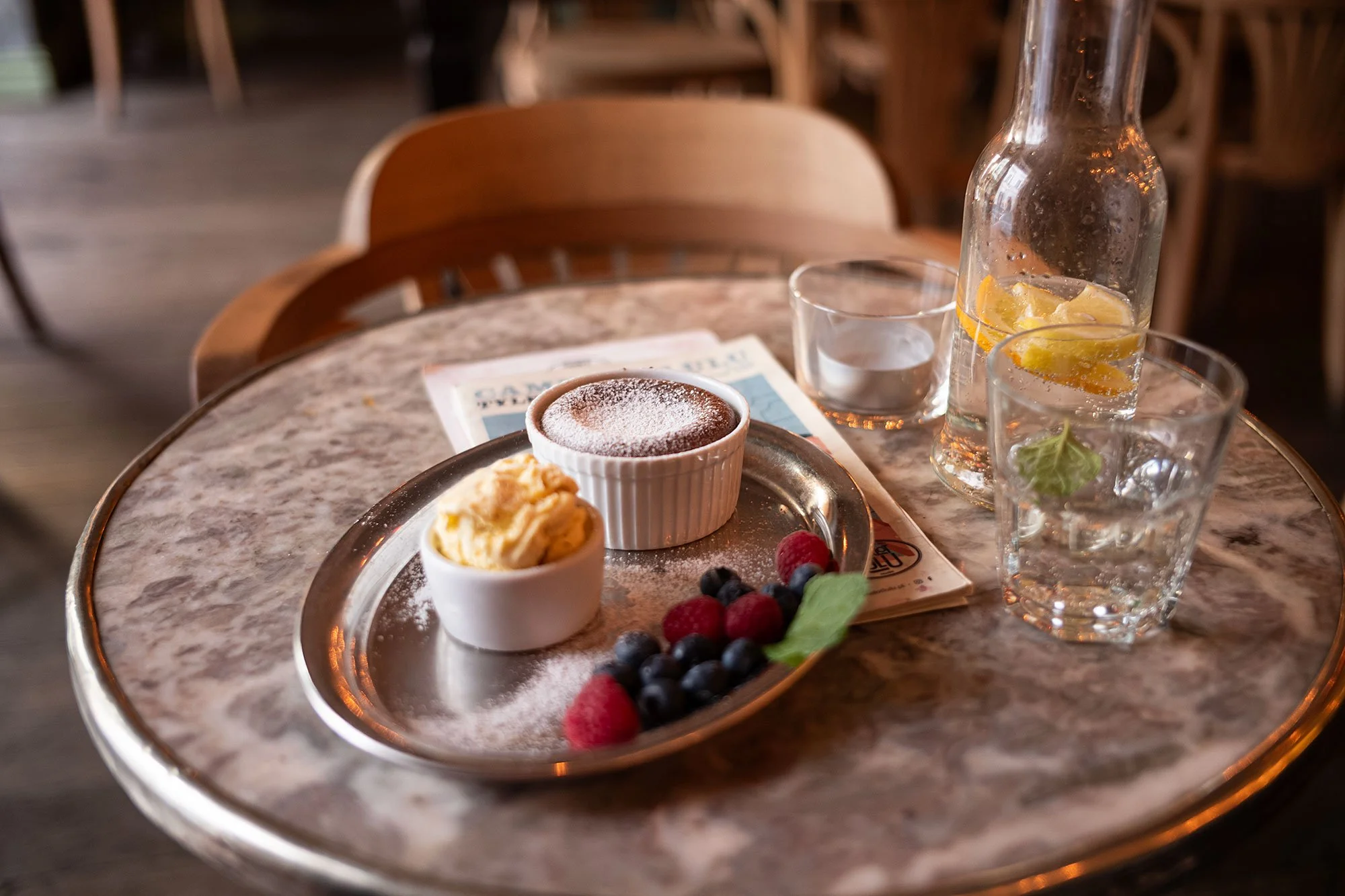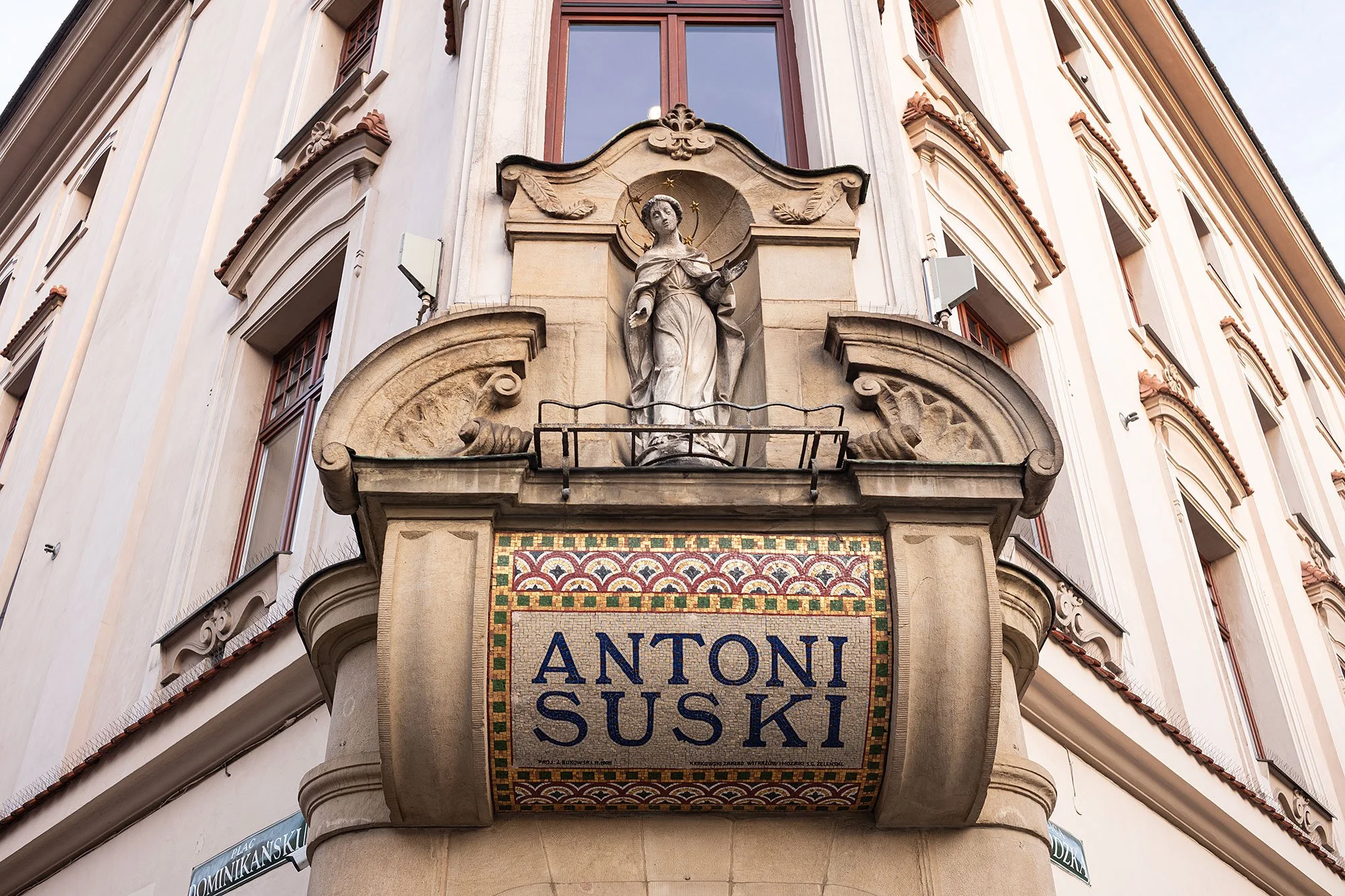Three days in Kraków, part two.
I get to a late start. I’m not planning on doing much, having seen so much of the city the day before. Little do I realize how much I’ll do.
I decide to start my day at the Czartoryski Museum not the least reason being to see Leonardo DaVinci’s Lady with an Ermine, the semi-official mascot of the city..
Passing St. Mary's Basilica I stop to listen to the bugler play Hejnał mariacki in each cardinal direction, cutting his performance short at the point at which a bugler in 1241 was shot by an arrow during the Tatar invasion.
Each direction has a symbolic meaning: South is towards the royal Wawel Castle, played for the king; west is towards the city magistrate, played for the mayor and councillors; east is played for the merchants, and north is towards the Floriańska Gate for guests entering the city.
Moved to act I walk to the ticket office in a building across from the church to ask about ticket to the bugler tower; they’re available from 13h10 on. Taking advantage of the time I buy one for 13h10 and then race over to the museum.
The Czartoryski Museum is free for the day. I have a little less than an hour. I’m surprised at how big it is is; an hour isn’t enough time to do it justice. And so like, like Franz, Arthur, and Odile in Bande à part, I see what I can do speed-running through the museum, seeing if I can see everything.
I’m surprised at the breadth of the exhibits in the museum, especially when I come across sculptures from India and a gallery of Asian art, which stand out amidst the European collections. I’m also a sucker for Indian sculpture, both in bronze and when carved out of stone.
With time running short I almost miss see the DaVinci painting. I try following. tour group to see where they’re going but they’re moving too slowly. When I find the painting, I’m surprised at how empty the room is and spend some time with the pa
Leaving the museum I cross the street to look into the 18th century Church of the Transfiguration. I love the frescoes behind the altar, painted by the Moravian artsts Franz Gregor Ignaz Eckstein and Joseph Piltz
I walk back towards the main square down Szpitalna, choosing a new street to walk down. Passing the 19th-century Juliusz Słowacki Theatre. Named after the Polish poet, the theater is known as the birthplace of the theatrical concept of the Young Poland movement, a modernist period that promoted decadence, neo-romanticism, symbolism, and Impressionism. I don’t have the time to explore but make a note to see if there are any performances I might attend.
The entrance to the bugler’s tower is outside the church, down a small set of stairs. I’m slightly early and take a seat on the cobblestones and take out my book to read while I wait.
As the time approaches the door opens and a man steps out. People from the previous group of visitors file out one by one in various groups. With the last group finished with their visit we are let in.
I’m third in line, but the first couple pause on a landing and I walk to the top, arriving first. I’m alone with the bugler and a representative of the organization responsible for him.
He tells me he works seven days a month. Each shift is 24 hours. Every hour on the hour he plays the tune once out of each of the four windows. There’s a shower and bathroom in the room. All in all, it doesn’t seem like such a bad gig. I ask him what he does when he’s not in the tower. Lately, he plays a lot of funerals.
The views from the windows are spectacular. I imagine they’re the best views in Krakow. From one window one of the guests spots a nearby stadium and he and the bugler get into a spirited conversation about fútbol, reliving matches from the past.
Back in the square I debate climbing to the top of the Town Hall Tower, but don’t feel like doing back-to-back climbs. Instead, I decide to return to the castle to visit the castle itself as it was closed the day before.
I walk through the park along the edge of the old town, walking the same route I had the day before in reverse. I stop for a moment in front of a sculpture of the Polish mathematicians Stefan Banach and Otton Nikodym, It’s said to comemorate a famous moment when mathematician Hugo Steinhaus joined them in a discussion of mathematics after overhearing their conversation.
It’s unclear to me why Steinhaus isn’t represented, unless we’re all supposed to be Steinhaus, pausing in front of the artwork to engage with it. Had I known before I may have tried to make my college modern math professor proud. Lord knows I failed back then.
Steinhaus later went on to help establish the Lwów School of Mathematics (renowned for its contributions to point-set topology, set theory, and functional analysis), of which Banach was a member. Nikodym married the first Polish woman to obtain a PhD in mathematics, Stanisława Nikodym.
At the castle I obtain tickets for the Castle I and the Castle II tours, which come with a geo-fenced audioguide. It’s one of the best I’ve used as it automatically starts when you enter a room and guides you on to the next.
The castle contains a vast array of artworks arranged in various collections. My rooms contain “The Porcelain Cabinet,” a highlight of which is Johann Joachim Kändler’s “The Crucifixion,” created around 1743. It’s an elaborate 143 cm tall creation, and the way in which it’s lit and framed against the dark walls of the exhibition make it a striking centerpiece of the exhibition.
Other rooms of the castle have a predictable arrangement of art and artifacts, tables, chairs, carpets, and paintings.
But some contain beautiful friezes, including one titled the Military Review Vestibule by Anton Wiedt of Breslau. Running along the top of the walls of teh room, the frieze depicts a military parade including portraits of King Sigismund I, his daughter Anna Jagiellon, and the court goldsmith Gian Giacomo Caraglio.
In a nearby room I admire the Maiolica plates, tin-glazed earthenware from the Renaissance. The Renissance came to Poland from Italy thanks to Bona Sforza, who became the queen of the country when she married the widowed Sigismund the Old in 1518. The political match was arranged by her mother, Isabella of Aragon, with Habsburg support, who sought to curb the Jagiellonian dynasty's influence in Eastern Europe.
Perhaps not surprisingly, I’m drawn to the center plate, which depicts the music competition between Pan and Apollo.
My wanderings bring me to the Throne Room, once the location for sessions of the Polish prliament (the Sejm) and other court ceremonies. The most interesting aspect of the room are the sculptures affixed to the ceiling. Known as the Wawel heads, they were created in Sebastian Tauerbach and Hans Snycerz’s workshop around 1540.
Originally 194 heads were installed, of which 30 survive today. The original heads represent people of different occuptions and social sttuses, though a series of 12 "Wawel heads" were carved by Xawery Dunikowski between 1925 and 1927. Those heads included representations of poet and dramatist Adam Mickiewicz, former Queen of Poland Anna Jagiellon, and the first king-elect of Poland-Lithuania Henryk Walezy. The latter was apparently universally despised and fled to become Henry III of France. I guess being first is more important than being loved.
These newer heads were never installed.
Rounding out my visit I walk the final rooms and private apartments on the tour, admiring Jagiellonian “verdure” tapestries, Italian Baroque paintings, and ornate painted ceilings.
A large tapestry hangs in the final room, the Senators' Hall. It’s part of the castle’s extensive collection of Jagiellonian tapestries, but it doesn’t seem to be the one described in the recording, though once I’m back home the internet tells me it’s “The moral fall of humanity” created by Jan de Kempeneer around 1550.
Leaving the castle I tell the person collecting the audio guide how much I loved it and the way in which it guided me through the castle. He seems a little perplexed but thanks me just the same.
In the old town I walk the main street towards my hotel. passing the Saints Peter and Paul Church and stopping for a slice of mediocre pizza across the street to tie me over to dinner. I consider going home to rest but my nature gets the better of me and I decide to climb the Town Hall Tower for the views.
From the tower there are views towards the bugler’s tower atop St. Mary's Basilica and back towards the castle from whence I came. I’m glad to have come, even though I promised myself earlier in the day that I wouldn’t force myself to climb another tower, though the bugler’s tower definitely has the superior views and is much more worth the climb.
To those of you who might be visiting and are shrot on time (or energy), I’d definitely choose the bugler’s tower over town hall. You might also get to meet an interesting bugler!
Back down in the square I debate what to do with myself. I need to pack, but it’s such a beautiful afternoon that I’m loathe to go back to the hotel and so decide to pay another visit to Camelot Lulu.
I order a cake and read a book. Another couple enters and orders the same. It’s a really beautiful cafe and has an ambiance that rivals any I’ve visited in Central Europe.
On leaving I think the manager greets me by name but I can’t be sure. I wonder if she’s the one who manages their social media account.
I head back to the hotel to pack, after which I don’t feel much like going out again. I feel like I need a little more structure to my life, but I’m not sure exactly what that means. As I contemplate the thought I lie back in bed and turn on the TV. I’m going to skip dinner and stay in. 🇵🇱


























































